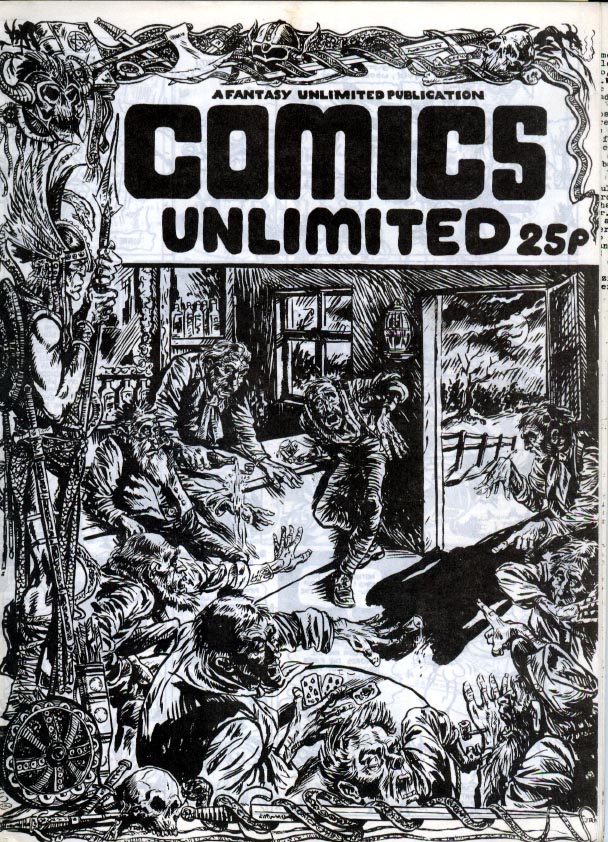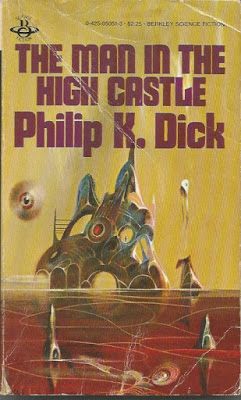I promised I’d return to Aidan Moher’s questions about the fan Hugo nominees:
But don’t even get me started on the Best Fanzine and Best Fan Writer awards. Maybe I’m exposing my ignorance here, but beyond StarShip Sofa, I haven’t heard of a damn one, nor am I familiar with any of the writers. My beef, obviously, is the lack of presence of blogs, bloggers and online writers. Where’re the Nialls (Harrison and Alexander)? Where’s Abigail Nussbaum or Adam Whitehead? No nod for SF Signal? Really?
Really? Are we to assume from Moher’s tone that there’s a consensus about the best work in the field accepted by everyone except the actual Hugo voters?
There’s no consensus – there’s not even a plurality of opinion. Not among fandom at large and not among those dinosaurs the “traditional fanzine fans.”
Look how many different things were nominated in the fan categories this year – 119 fanzines, 225 fan writers. The leading fan writer (whoever that is) appeared only on 22% of the ballots. It was possible to reach the finals in Best Fanzine or Best Fan Artist with support of just 13% of the voters, and in Best Fan Writer with only 9%. Four-fifths of the voters might easily be asking if everyone else really neglected their favorites, but filling in the blank with names Moher never mentioned:
|
Votes |
Unique Nominees |
Range |
| Low |
% |
High |
% |
| Best Fanzine |
340 |
119 |
43 |
0.13 |
69 |
0.20 |
| Best Fan Writer |
323 |
225 |
30 |
0.09 |
70 |
0.22 |
| Best Fan Artist |
176 |
97 |
23 |
0.13 |
46 |
0.26 |
I happen to agree that Moher’s examples are, indeed, excellent. The thing is — there’s a lot of quality work being done, many admired writers, and the voters in the fan categories are passionate about a wide variety of choices. They have such a diversity of interests that there’s no justification for Moher to take on so, as if his examples of the most award-worthy fan writers or fanzines are so superior they’re the only ones anyone should embrace.
The Not So Great Divide: Moher’s complaint about a “lack of presence of blogs, bloggers and online writers” among the nominees appeals to the idea there is divide between people who engage in online fanac and… uh… come to think of it, who exactly is supposed to be on the other side of that divide?
Everybody uses the Web now. The Cool Kids and the Old Pharts haven’t been divided between pixels and paper for years. Did you notice there were only 14 paper ballots out of 1006 cast?
In hindsight, I believe the separation of various fan communities was not a technological divide but was a byproduct of people’s attempt to define fandom in a way that allowed them to believe they were keeping up with the part that mattered (therefore making it okay to ignore the rest.) Time is finite and interests vary with the individual, few fans have the desire or resources to participate in the full spectrum. That’s a social dynamic at work, not a byproduct of choices in communication technology.
There may be a divide of a different kind at work currently. Aren’t most of Moher’s examples distinguished by their passion for discussing sf & fantasy? Don’t most of the present fan Hugo finalists focus on fandom and social interests rather than discussions of genre literature? In the last culture war between faanish and sercon fans, the former were offended by all those darn book review zines hogging space on the Hugo ballot. I wonder if we haven’t cycled around to a version of this controversy again.
Despite our milieu being called “science fiction fandom” we often underestimate how much a quality discussion of science fiction or life inside the writing business appeals to fans. Would Fred Pohl have won a Best Fan Writer Hugo if every post was about the bheer can tower to the moon or something equally skiffy?
This pendulum swings back and forth as time passes and varies which interest dominates the Hugo ballot.
Legislated Change: When the “Making the Web Eligible” amendments to the Hugo rules took effect in 2010 many fans predicted they would yield a radically different slate of nominees – a prospect filling some with delight and others with dread. Those predictions came true. The winner of the 2010 Best Fanzine Hugo, StarShip Sofa, was a podcast. Three first-timers were up for the Best Fan Writer Hugo, two bloggers, those overnight sensations James Nicoll and Fred Pohl, plus letterhack Lloyd Penney.
Yet in 2011 voters returned some of the old standbys to the final ballot, so it’s not as if an asteroid struck the earth last year and wiped out the dinosaurs.
Why Does It Look This Way? Three factors seem to have moderated the change everyone predicted.
First, the growing participation in the Hugos — a record 1006 Worldcon members cast nominating ballots in 2011 — hasn’t impacted the fan categories. The average voter isn’t interested in fanac and leaves that part of the ballot blank.
Second, veteran fans with somewhat convergent ideas about fanzines still exert leverage on the Hugo nominating process, as I’ll explain.
Third, voters don’t know what “Making the Web Eligible” made eligible that wasn’t before. The amended rules failed to provide clear direction. This vagueness makes newcomers shy away from participating in the fan categories. People only vote when they’re somewhat confident about what they’re supposed to be voting for.
White Space: Hugo Administrator Vincent Docherty’s statistical summary shows that while practically every voter nominated something in the Best Novel category, with 83% participation, the typical ballot otherwise left many of categories completely blank.
| 2011 Hugos |
| Total Ballots = 1006 |
Votes Cast in Category |
Percentage of All Ballots |
| Best Novel |
833 |
0.83 |
| Best Novella |
407 |
0.40 |
| Best Novelette |
382 |
0.38 |
| Best Short Story |
515 |
0.51 |
| Best Related Work |
375 |
0.37 |
| Best Graphic Story |
287 |
0.29 |
| BDP, Long Form |
510 |
0.51 |
| BDP, Short Form |
394 |
0.39 |
| Best Editor, Short |
425 |
0.42 |
| Best Editor, Long |
300 |
0.30 |
| Best Pro Artist |
406 |
0.40 |
| Best Semiprozine |
368 |
0.37 |
| Best Fanzine |
340 |
0.34 |
| Best Fan Writer |
323 |
0.32 |
| Best Fan Artist |
176 |
0.17 |
My interpretation of these statistics is that they show voters nominate in categories where they feel a higher level of confidence in their knowledge about what deserves an award — and skip the rest.
Something else I believe is true, though it can’t be proven with the voting stats, is this:
Most Hugo voters don’t read fanzines.
Most Hugo voters don’t read blogs by fans.
Because most Hugo voters don’t read fan writing, which is what your typical fanzine or fannish blog is filled with. It really makes no difference whether the fan writing is online or what format it’s in.
Most Hugo voters don’t know any names to write down in the fan categories, so most of them don’t nominate in the fan categories.
Ballots Better Than Bullets: That leaves those of us who think we do know something about the subject to thresh things out. And the numbers show in the Best Fanzine category that the people who are sure they know what a fanzine is and have an opinion about what the best ones are, simply by filling out their ballots completely, wield a surprising degree of influence over what makes the final ballot. This can be inferred from the voting statistics.
In every category a great many voters cast “bullet votes” — they write down just one or two selected friends or favorites. Here’s how we know that. Remember, a voter can nominate up to five items in each category. Now look at the Best Novel category:
| 2011 Hugos |
| Total Ballots = 1006 |
|
Total
Nominations
|
Average Nominations |
| Best Novel |
833 |
2657 |
3.19 |
| Best Novella |
407 |
987 |
2.43 |
| Best Novelette |
382 |
1014 |
2.65 |
| Best Short Story |
515 |
1538 |
2.99 |
| Best Related Work |
375 |
729 |
1.94 |
| Best Graphic Story |
287 |
660 |
2.30 |
| BDP, Long Form |
510 |
1283 |
2.52 |
| BDP, Short Form |
394 |
1036 |
2.63 |
| Best Editor, Short |
425 |
1105 |
2.60 |
| Best Editor, Long |
300 |
629 |
2.10 |
| Best Pro Artist |
406 |
1058 |
2.61 |
| Best Semiprozine |
368 |
881 |
2.39 |
| Best Fanzine |
340 |
819 |
2.41 |
| Best Fan Writer |
323 |
912 |
2.82 |
| Best Fan Artist |
176 |
462 |
2.63 |
Docherty reports voters made 2657 total nominations. Therefore, 2657 divided by 833 ballots equals an average of 3.19 nominations per ballot.
Working through the rest of the ballot there’s surprising consistency — nearly every category averaged 2-3 nominations or less per ballot.
Some voters are filling in four or five slots on their ballots, so that overall low average can only be achieved if a large proportion of the other voters write in just a single nominee – casting bullet votes.
Without looking at the ballots, which isn’t allowed, no one can tell which nominees were helped by bullet voting, and that’s beside the point. My purpose is to show how prevalent bullet votes must be.
I believe we fannish voters continue to have a greater impact for the very reason that we do put something in all five spaces. If, after I fire one of my bullets for File 770, I follow it with another for Challenger (which is a terrific fanzine), give the third to The Drink Tank and so on – that collectively lifts a certain community of fanzines above the background noise. Even a small convergence of this kind influences the outcome.
Why Johnny Can’t Define “Issue”: A few months ago I was happy to get an e-mail from the Hugo Administrator telling me File 770 was nominated. The e-mail also asked me to verify that I was eligible in the category:
We’re delighted to inform you that File 770 has been nominated for a Hugo Award in the category of Best Fanzine. The Best Fanzine category is for any generally available non-professional publication devoted to science fiction, fantasy, or related subjects which by the close of 2010 has published four (4) or more issues (or the equivalent in other media), at least one (1) of which appeared in the previous calendar year, and which does not qualify as a semiprozine.
Can you confirm this requirement and do you accept the nomination in this category?
Easy for me to answer that affirmatively, I had a paper issue out last year. All the other finalists had distinct issues, too.
Were any of the prospective nominees blog creators, who read this paragraph and decided their work didn’t qualify and declined the nomination? I doubt it. Nobody on the verge of making the final ballot will think, “I’ve made 200 blog posts but I’m not sure if that’s the equivalent of four issues, so I’d better turn down this nomination.”
But I do suspect that Hugo voters are deterred from nominating things that don’t come in easily-definable issues. Maybe they should be. Last year John Scalzi, seconded by Cheryl Morgan, advanced the idea that their blogs were not fanzines or related works, setting an example to the effect that bloggers should be recognized only in the Best Fan Writer category.
No way of really deciding who’s right – the authors of “Making the Web Eligible” failed to say what “the equivalent in other media” is. And because fans shy away from voting in categories unless they’re confident in their knowledge, don’t you suppose the lack of an explicit definition chills participation?
Vincent Docherty, Hugo Administrator for 2010 and again in 2011, provided helpful guidance last year that made it clear the voters collectively would have the most say about what qualifies:
In summary, unless I feel very certain a work is technically ineligible, (which includes having only a trivial amount of new material), I will accept the will of the nominators. It is therefore up to the electorate to act as the jury on the facts and answer the question: ‘Is this work a fanzine (or semiprozine or Related Work) or not?‘
Of course the rules change was nicknamed “Making the Web Eligible” for a reason – the movers did not intend that only things looking like paper magazines would be allowed into contention as fanzines, otherwise they need not have changed the rules.
Last year the three online non-magazine publications receiving the most nominations for Best Fanzine, besides winner StarShip Sofa, were SF Signal (17), Australian Speculative Fiction in Focus (13), and The Way the Future Blogs (11). They may make it yet.
Conclusion: I hate to say it, but the infinite audience of the internet mostly avoids reading our fascinating verbiage, whether it appears on a hip happening blog or in a bilious old PDF file at eFanzines. Everybody wishes they drew like Scalzi at Whatever. Most are lucky to draw like Glyer at File 770. Enormous numbers of people online have an interest in sf – it’s mainstream now. How many are engaged in fannish activities like fan writing, con running, publishing, etc. How many are connected to the Worldcon community whose members vote on the Hugos?
We have fannish communities with varied interests and tastes and while it’s typical of the age to assume the other side is biased and corrupt, in fact it’s everyone’s privilege to like what they like. The prospects with the most support will make the final ballot, which is how the Hugos are designed to work.
(P.S. I note that SF Awards Watch has done its own exploration of the voting stats in “A New Hugo Award Podcast”. If this post was inspired by their work I’d happily admit it, but it’s not.)
Update 05/23/2011: Fixed one table — thanks to Mike K. Discovered I had copied another test calculation which isn’t discussed in this post.








